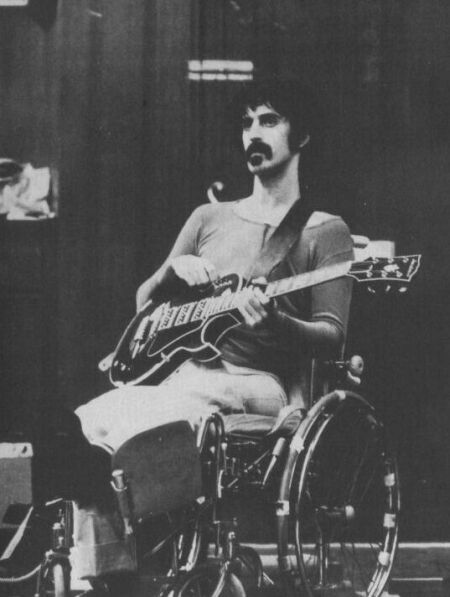It was Fall 1987 and a busy time for me. Over a period of two months, my first hardcover book, Once A Catholic, had been published, and I had embarked on my first author tour, opening for Pope John Paul II in selected cities (literally at times; if the Pontiff was saying mass later that day in Detroit, I'd be on the local morning news show along with some priests or nuns). I had finished the manuscript of the first of two books with Larry King (Tell It to the King, Putnam), and then I had flown out to L.A. to start work on Zappa's autobiography.
The previous year, I had interviewed Frank for Once A Catholic— in which he spoke openly about his Catholic upbringing—the difference between religion and spirituality, his admiration for Gregorian chant, and music as "sculpted air." (As far as I'm aware, this is the only time he ever discussed his religious background and his feelings about spirituality, other than his loathing of all televangelists.) Coincidentally, my friend and colleague Paul Slansky recommended me to Frank's publisher to coauthor his impending autobiography. Frank subsequently called and began by giving me a detailed critique of everything that was wrong with my rendition of our interview!
I figured that was it for my participation in the project. But then he pivoted and said he felt he could get along with me well enough to make it through what he presumed would be the arduous process of writing his autobiography. Arduous because, as Frank acknowledged above, he hated to read or write and thought books were a waste of time. The publisher offered me a sizeable advance, however, so I flew out and rented an apartment in Sherman Oaks, close enough to Frank's house in the Hollywood Hills that I could commute there daily to work on the book.
To say the least, our work schedule was Zappa-esque. Frank was in the midst of rehearsing his band for an upcoming tour, and his daily schedule went something like this:
• 4 PM to 12 midnight, rehearse his band in the studio;
• Midnight to 6 AM, return home and work on the book with me.
When Frank descended from the "dangerous kitchen" to start work, he sometimes brought along a hot dog or some other foodstuff, but most nights he appeared with only a large portable thermos—the kind with a push-down top that you still see in delis and convenience stores—loaded with black coffee. As he consumed its contents during the course of our work each night, he also smoked cigarettes—a lot of cigarettes. I had quit smoking a few years before and found the smell detestable, but hey, I was under contract and Frank was Frank. He considered cigarettes to be food ("Tobacco is my favorite vegetable"), and didn't understand why people were so uptight about secondhand smoke.
I would show up at Frank's home around 11 PM, hoping that Dweezil or Moon Unit or Gail would be there to let me in and show me down to the basement. The room contained Frank's recording studio, which held both his prized Synclavier III synthesizer ("the same one Michael Jackson uses," he said proudly) and a Bösendorfer piano! In the center of the room was a large black leather sofa positioned for viewing TV or, more importantly, videocassettes, with the audio coming through stereo speakers. This was the first time I'd seen a stereophonic VCR played through a hi-fi system, and I determined to set up one when I got back to New York. Frank usually left instructions for me to view certain videocassettes so that we could discuss the subject matter later that night when he got home—in part because he wanted me to understand the lengths to which his fans would go to impress him.
[...] True to his reputation among fellow musicians and band members of being an extreme control freak, Frank insisted on completely revising the first draft, which I had sent him in both typed form and on floppy discs (remember those?). Frank's first response to my draft was to tell our editor that my draft was unacceptable, and he implied he might not authorize the remainder of the advance I was due. But then he apparently sat down at his computer and started to play around with all those computer files. And there were plenty of files. I had recorded some three dozen 90-minute cassettes (a little over 50 hours), and I took the best material from those tapes, put it into files, and arranged them chronologically, but also by topic.
So, Frank had a lot to play with. He also hired an illustrator and added strategically placed boldface type and made the book more fun to look at than most all-text books.
